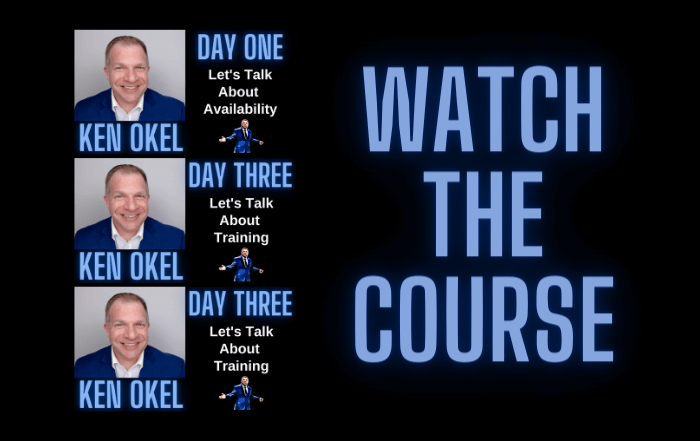Does your nonprofit need outside help with its marketing needs? It can be a smart decision to bring in a level of expertise that doesn’t exist inside of your organization. After all, you do great work. Why not take extra steps to make sure your community knows who you are, what you do, and why you need support.
It’s a good, tactical move because you understand that the competition for dollars is increasing and you need to spend more money on development and outreach.
As someone who has worked for nonprofits, served as a board member, and been paid as a marketing consultant, I understand the passion you feel for your cause. The problem is that while you’re really good at your mission, you may not know much about marketing. And that can leave you vulnerable to some sneaky marketing tactics.
These are problems that can cost you a lot of money, leave you frustrated, and make you swear off ever getting marketing assistance in the future. My goal is to empower you, so you’ll get the greatest return for your investment on advertising, promotion, web design, photography, and video services.
It’s like buying a car. To some vendors, you look like an excited teenager on a used car lot. The more knowledge you have, the more money you’ll save or avoid spending on things you don’t need. Having this information protects you from those who are greedy and confirms the quality of those who are offering you a good product at a fair price.
Keep these tips in mind the next time you shop for outside marketing services:
Who Does the Work?
Let’s say that you meet with a firm to discuss the creation of a video or a website. You will likely be directed to an impressive online portfolio. While you may be dazzled by what you see, I want you to resist the urge to immediately sign on the dotted line.
Why? Because sometimes you can be the victim of a bait and switch. The portfolio may represent the output of a seasoned veteran, perhaps the owner of the firm. It’s dazzling.
But that person may not be doing the work on your project. It may be passed down to someone with zero experience or someone’s whose work would never be featured in a portfolio.
While experience doesn’t always equal excellence, you should have an opportunity to see the talent level of the person who will be working on your project. Otherwise, you may pay top dollar for beginner work.
You Pay for Discounts
Some marketing firms will offers special rates for nonprofits. Saving a few dollars can be very enticing. In many cases, firms do this out of the goodness of their hearts. Bless them.
Then there are the companies that use nonprofit business as a way to fill in the gaps when they’re not otherwise making money from full fee clients. You’re seen as a cheap date and not as a relationship.
The danger is that you are not their top priority. If a full fee job comes along, work on your project will likely be put on hold. You won’t be told this. You’ll just wonder why the work hasn’t been done and why your emails aren’t being returned in a timely fashion.
If you complain, then you’re told, “Hey, you’re getting the work done for less.” This is not an acceptable response.
If you agree to a discount, you need to make sure that your project will be a priority. Otherwise the discount will be used as an excuse for not treating your work with the importance that it deserves.
Paying full fee may spare you from some headaches.
Define Everything
I understand handshake agreements but it’s better to get everything in writing. Make sure your project has a clear timeline. What will happen if a deadline is missed? This street needs to go both ways because it’s not always the company that’s dragging its feet. Nonprofits can be notoriously bad at allowing endless discussions to delay decisions.
Make sure there is a clear understanding about how many revisions can be made to the project. Does one side consider a revision to be fixing a typo while the other believes it means starting from scratch?
Will your assignment, like a a website, be based on a template? There’s nothing wrong with using something that’s been successful in the past. The downside is that when you use a template, it looks like everyone else’s website. Keep in mind that original work costs more.
In all of these scenarios, don’t worry about being demanding. You represent your stakeholders and they trust that you’ll make a smart investment. Take that responsibility seriously.
Family, Friends, and Donors
If you are going to hire someone’s family or friends, you need to make sure that the expectations and deliverables are clearly understood. These should not be shared on a cocktail napkin or a post-it note. You need to treat it like an official transaction.
If you hire a family member or a friend, are you willing to fire that person if things go poorly?
You also need to be very careful of donors or board members who recommend their family or friends. If that person isn’t up to the task and the results are poor, then it can be very uncomfortable explaining this to one of your stakeholders.
Social Media Question
Before you hire someone to help with your social media, ask this question: How have you kept up with the recent changes to (insert the name of the social media platform)?
Facebook, YouTube, Twitter, Instagram and other social media sites are constantly changing. You want to hire someone who has an ongoing commitment to keeping current. Put their knowledge to the test. Have them explain the changes. The response should help define your selection criteria. It’s also a good chance to see how well the person can explain things to those who may not be experts.
Your potential marketing partner should also have different strategies for different social media platforms. What works on Twitter, may not work as effectively on Facebook.
Beware of Stats
A nonprofit once considered buying advertising in its TV market, which was made up of three stations. A request for proposal was sent out and the responses all shared a similar theme.
Every station claimed to be Number One!
How could this be possible? It was all about the interpretation of statistics.
One station had the most viewers, another had the most viewers in the attractive 18-34 (year old) demographic, and the third said it was the best because it had the most web traffic.
Dig a little bit on claims of excellence by potential advertising partners.
The online world can also contain some sneaky interpretations. One TV station was charging top dollar for advertisement placements on its website. The high price seemed justified by the number of site visits as well as the number of video views.
Closer inspection revealed a different story. The statistics were based not on the one station but also the 12 sister stations that were owned by the same company. So stats from Baltimore and Nashville, and Louisville were being added to West Palm Beach.
The video views were also bogus because the videos were set to auto play when a web page was opened. People didn’t choose to watch them, although many clicked for them to stop as soon as they could.
Public Relations Questions
Find out how long the average client stays with the firm. Hundreds of people may sign up with a six month contract but if none of them renew, that lack of retention could tell you something about the agency’s work. A PR firm may have a great sales force but an otherwise weak workforce.
Do you feel confident that the agency will learn the terminology that goes along with your nonprofit? Or will you write everything, ask the firm to polish the content, and then have them distribute it?
Your nonprofit is different from the others and you don’t want someone promoting you with a one size fits all strategy.
Final Thought
Your job is not to subsidize the marketing industry. Take the time to investigate potential partners.
Ken Okel loves the work of nonprofits and believes in the power of marketing to take your message to a new level. He is a former TV journalist, nonprofit executive, conference speaker, and the author of the book, Stuck on Yellow. To find out more, visit KenOkel.com or call 561-737-4321.



